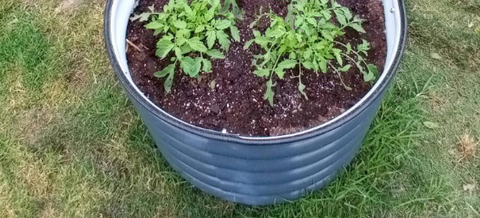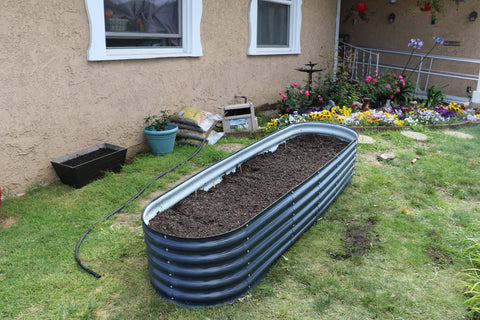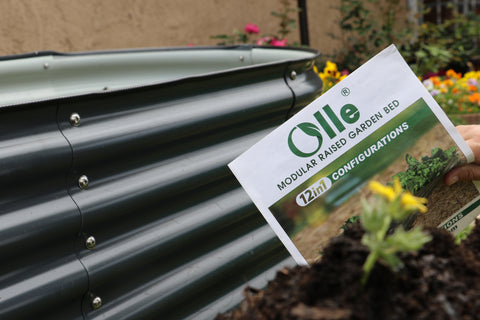Knowledge from Olle Garden Bed: When To Add Soil To The Garden
Gardening can be a relaxing and fulfilling hobby, but it's not as easy as throwing a few seeds and keeping your fingers crossed! To succeed, you must ensure that your garden has the correct amount and quality of soil. This means planting the garden, checking the pH of the soil, and adding topsoil and compost to the plants to promote their growth. The following content also has some reference value for raised garden beds.
Missing one or more of these steps may temporarily eliminate you from gardening! When you are ready to plant crops, you need to ensure that your garden has enough topsoil and compost for the coming season. This will be the main source of plant nutrition. Next you will learn about topsoil and compost and when to add them to your garden.

What is topsoil?
Topsoil is the top layer of soil in the garden. It is about 2 to 8 inches deep and consists of organic matter, clay, sand, rock, debris, and soil. Because its composition is different, its nutrient composition is also different. Shop bought topsoil sometimes contains compost (if not, you can certainly mix it yourself!
Compost is an additive to soil. It is made of decomposed organic matter and is considered as "black gold" because of all the nutrients it provides. The higher the compost level in the topsoil, the better the effect.
The question remains, when should topsoil be used and when should compost be selected? You need to check the soil, but as a general rule, if your soil needs to be stacked, you should select topsoil. However, if your goal is to improve its quality, you should choose compost.
So why does it always imply that the soil you add to your garden is always topsoil? This is because topsoil is the soil that every gardener dreams of! It contains a lot of organic substances called "hummus" and many beneficial microorganisms, which can promote soil and plant health. Soil organic matter (SOM) of topsoil can:
- Increase soil porosity.
- Improve soil structure.
- Promote the retention and release of plant nutrients.
- Promote water penetration.
With these benefits in mind, the use of topsoil makes sense only when adding soil to the garden. To promote soil and plant health, mix compost with topsoil before adding it to the garden.
So when is a good time to add soil to your garden?
Soil plays a vital role in the life cycle of plants. It is the driving force behind beautiful flowers and dense leaves. However, if you do not have high-quality soil, you need to modify it and add high-quality soil to your garden soil. At the beginning of the season, you need to add new soil layers if:
- Your garden soil has recently been fighting against pests, weeds, diseases and infections
Pests, weeds and diseases will persist in the soil and linger for a period of time. This is why, if you know that your plant has been struggling with any of these in the past seasons, it is almost essential to add a layer of soil to it.
- Rain and strong wind have eroded some parts of the garden
Rain and wind are everyday things for you, but they can be very harmful to your garden, especially if you have light topsoil. If you notice soil erosion and roots piercing the ground in some places, you should add a new layer of topsoil.
- You have tested the soil, which lacks nutrients for healthy plant growth
It is essential to conduct soil tests before the start of each season. This is a reliable way to know if you have all the necessary nutrients in your garden. However, if your garden lacks some nutrients, please add high-quality topsoil rich in organic substances to promote soil and plant health. You can even mix the compost with topsoil before adding it to the garden.
- You are practising crop rotation
Crop rotation refers to gardeners planting different crops on the same land to improve soil health, optimize nutrients, increase soil organic matter and resist weeds, pests and diseases. Simple rotation may include planting two or three different crops, but complex rotation may include planting more than ten crops on the same land. This practice is very popular in vegetable plots. Check your plot every year. If the amount of soil decreases, add 1 or 2 inches of topsoil to prevent the plant roots from being exposed.

What is good topsoil made of?
Your topsoil should consist of silt, sand, clay and organic matter. Organic matter will provide nutrients along the silt, sand will provide better ventilation and drainage, and clay will help keep everything together. The best way to add soil is to farm the garden so that the soil will mix well with the existing soil in the garden.
Soil type
You can classify the soil according to its composition and texture, depending on the minerals and materials contained in the soil. There are six main types of soil:
- Clay
This is the heaviest soil type. The clay remains moist throughout winter, but dries quickly in summer. Clay lacks proper ventilation and drainage due to its compaction, which also makes it difficult to excavate. Although it is not ideal for most crops, some plants thrive in clay.
- Sludge
Silt is one of the soil types with rich nutrients. Although silt holds water, it lacks soil structure. This soil is ideal for most plants, including cypresses, birches, willows, dogwoods, peach flowers, and New Zealand flax.
- Sand
Sandy soil may be a problem. It has few nutrients, and because of its very light weight, it has almost no anchoring. Unfortunately, this also means that sandy soil is vulnerable to erosion, making it a less ideal growth medium. However, it is good to mix it with heavier and nutrient rich soils because sandy soils can promote proper drainage.
- Loam
Loam combines sand, silt and clay. This nutrient rich soil contains a lot of organic matter, and has excellent water retention, drainage and aeration. The loam is not light, but acidic, and needs to be constantly enriched.
- Chalk
Cretaceous soil is a stone like shallow soil, with good drainage and lack of water retention. Because it contains high content of limestone, it is highly alkaline. It is an ideal choice for beets, spinach, cabbage, sweet corn, cloves and Wigra.
- Peat
Peat is moist and spongy, and gardeners often use it as a soil conditioner. Although it keeps water, it lacks proper drainage and less nutrition. Although it provides good ventilation and drainage, gardeners began to look for better alternatives, such as coconut shell, wood fiber or rice hull.

Too many choices!
If your soil lacks nutrients for healthy plant growth to repair soil erosion, or if you want to try crop rotation, you should add topsoil to your garden. Depending on the reason, there are different times to add to your garden soil.
